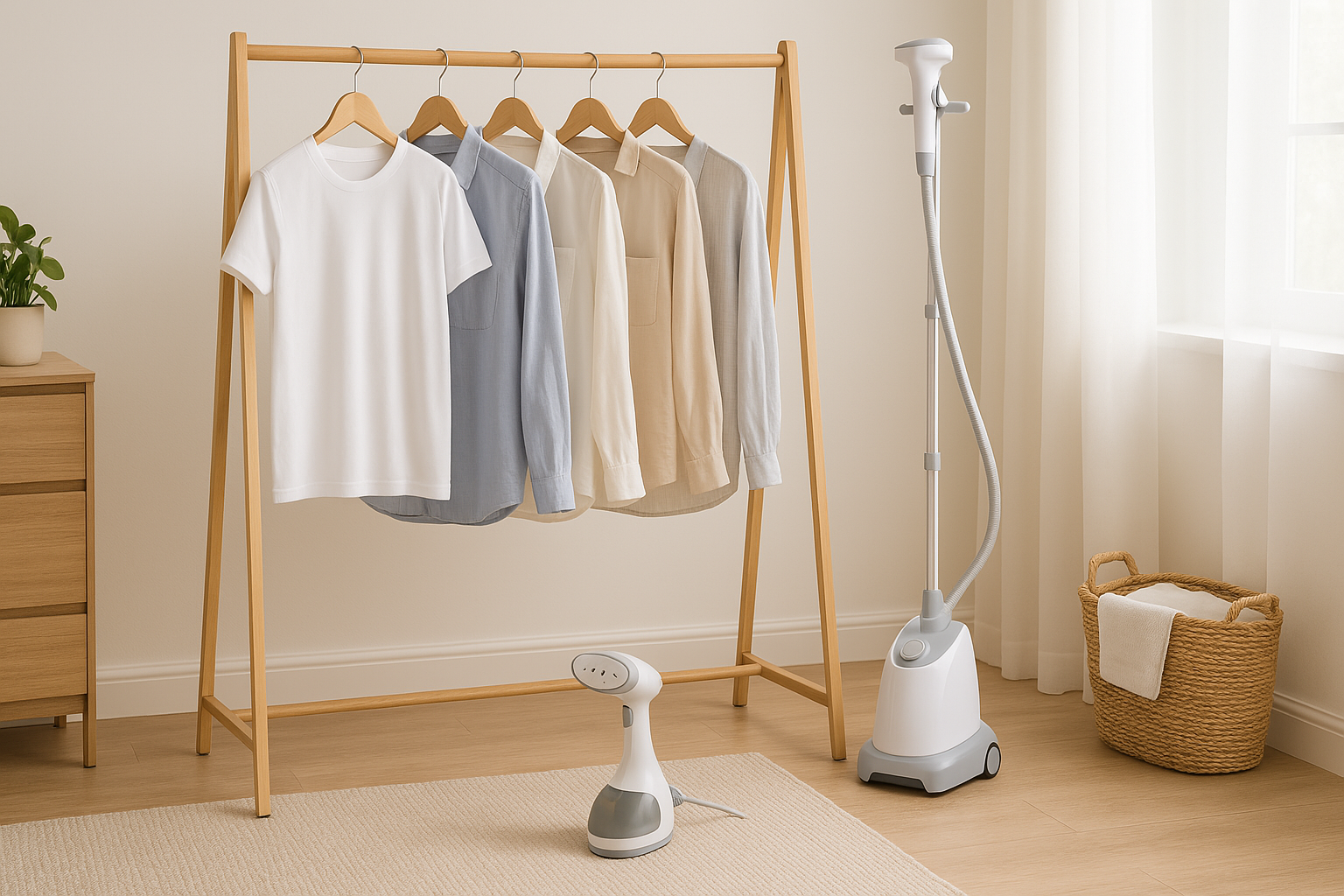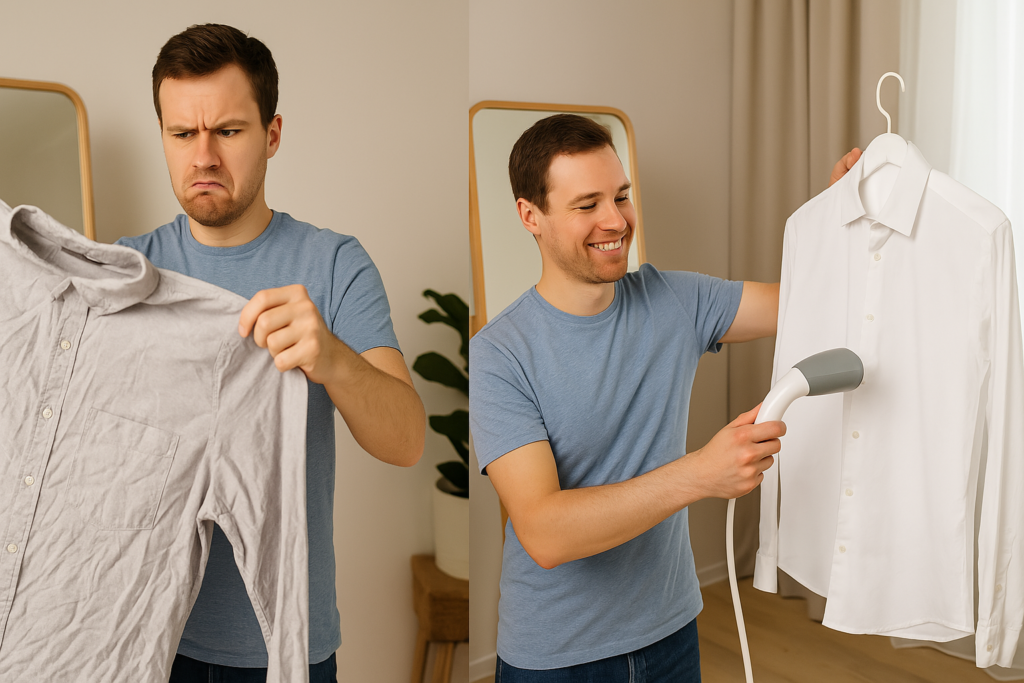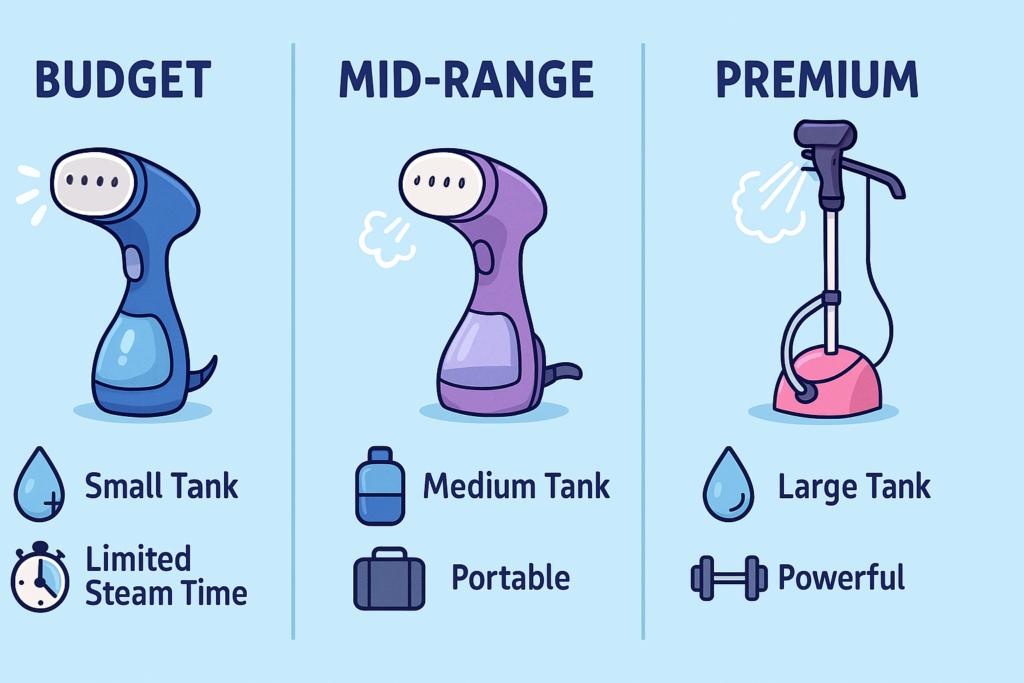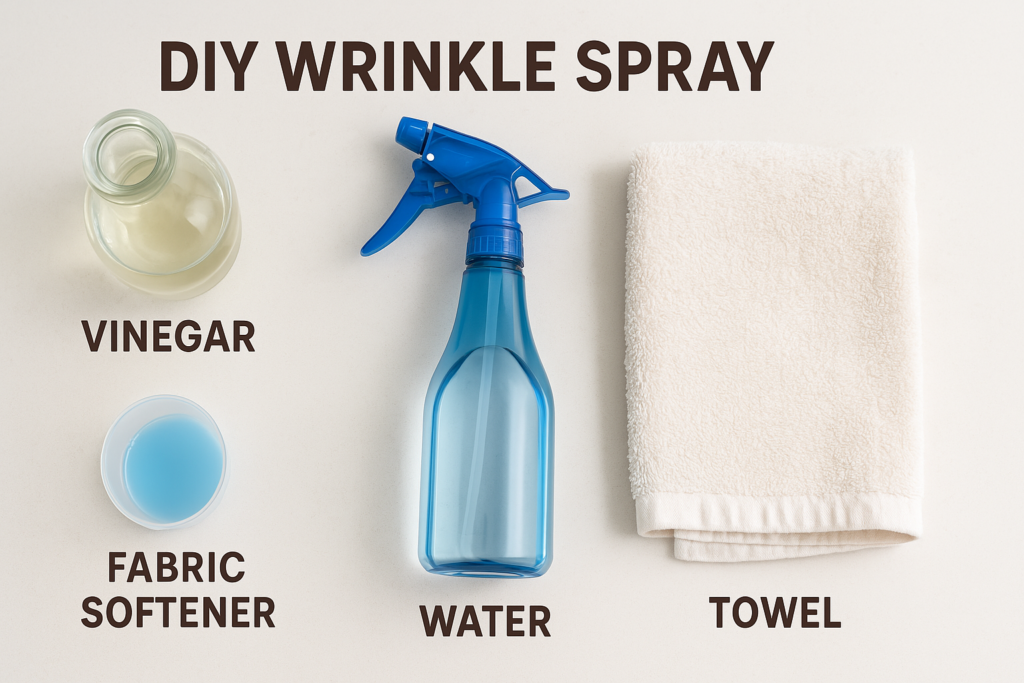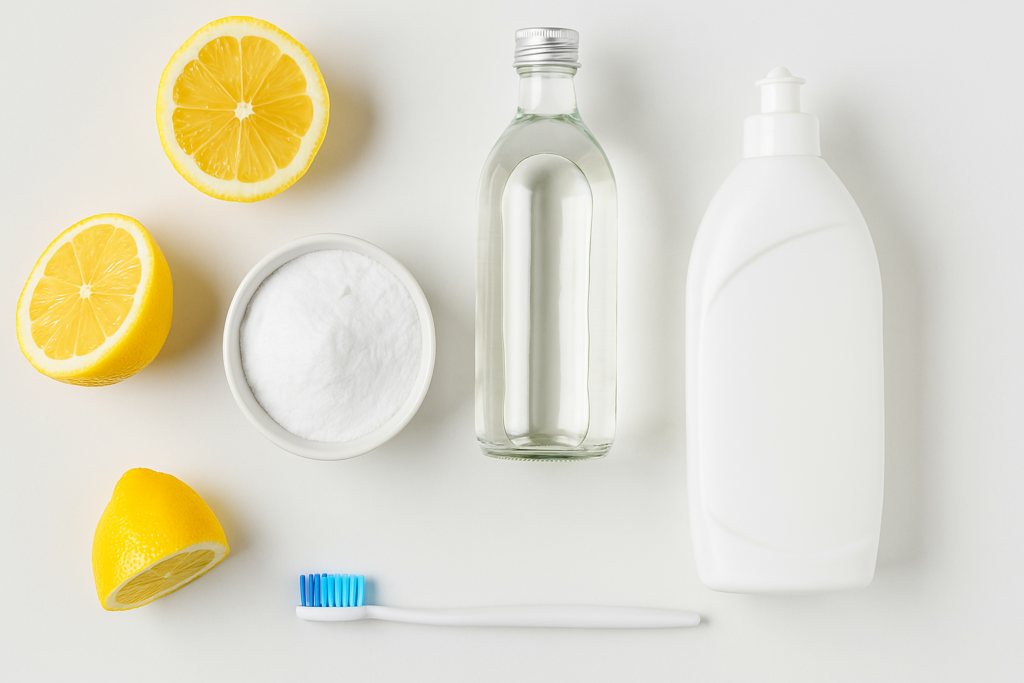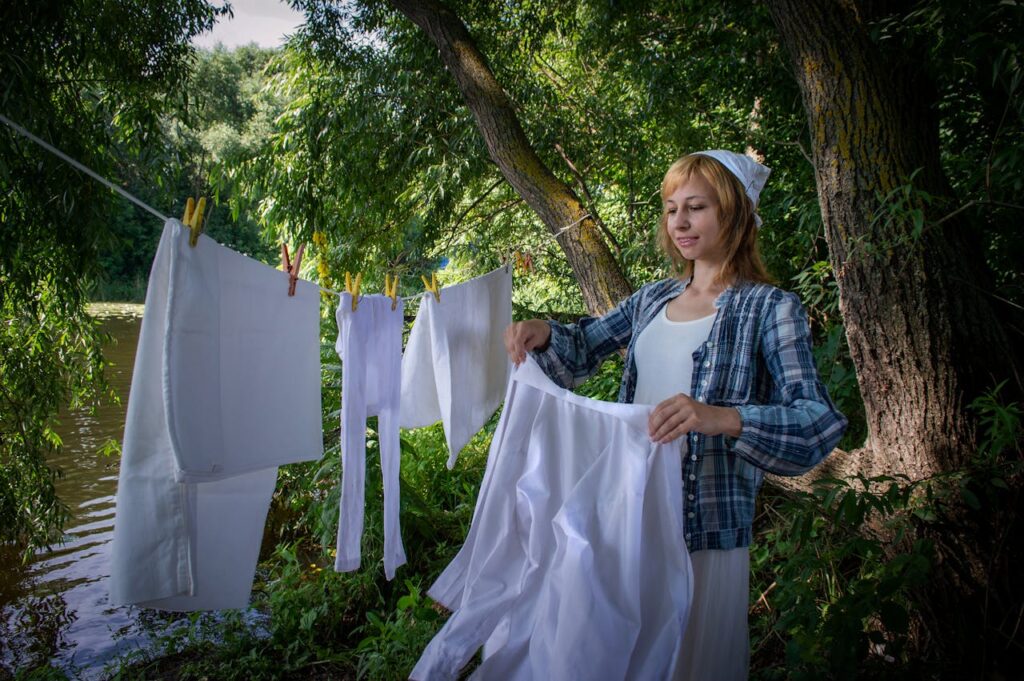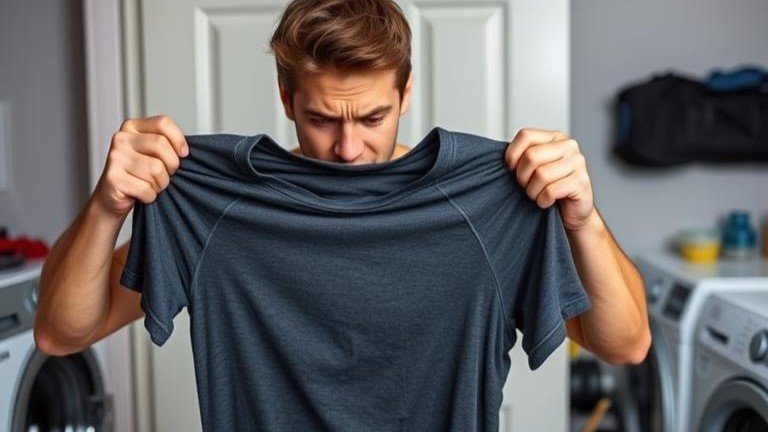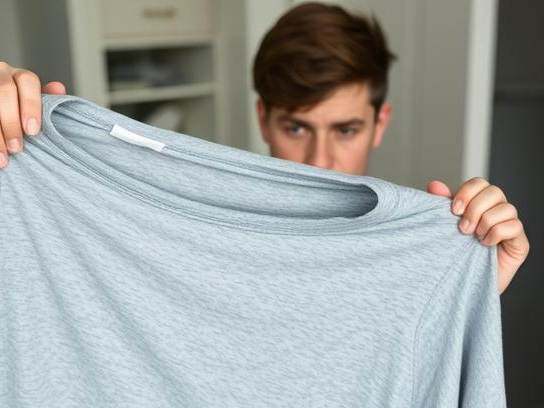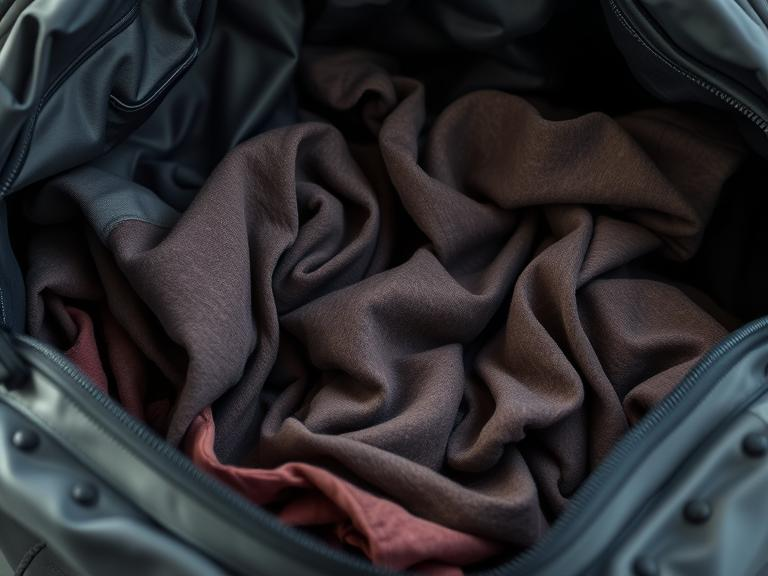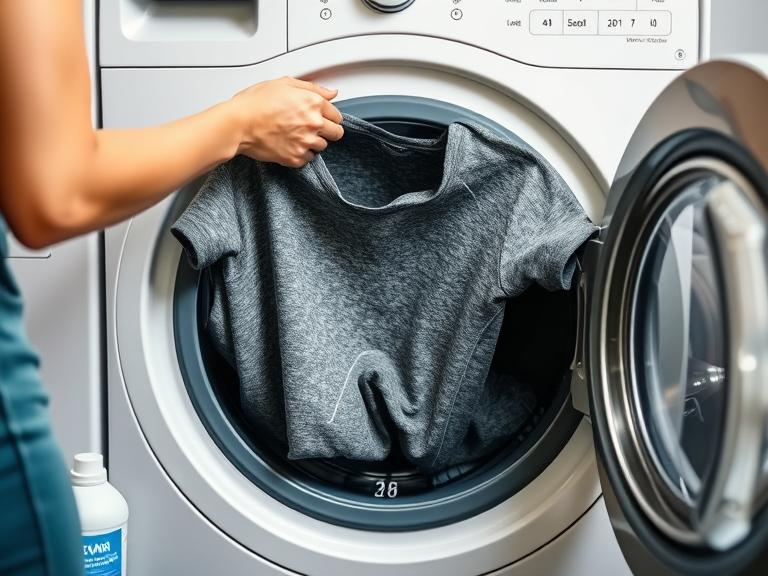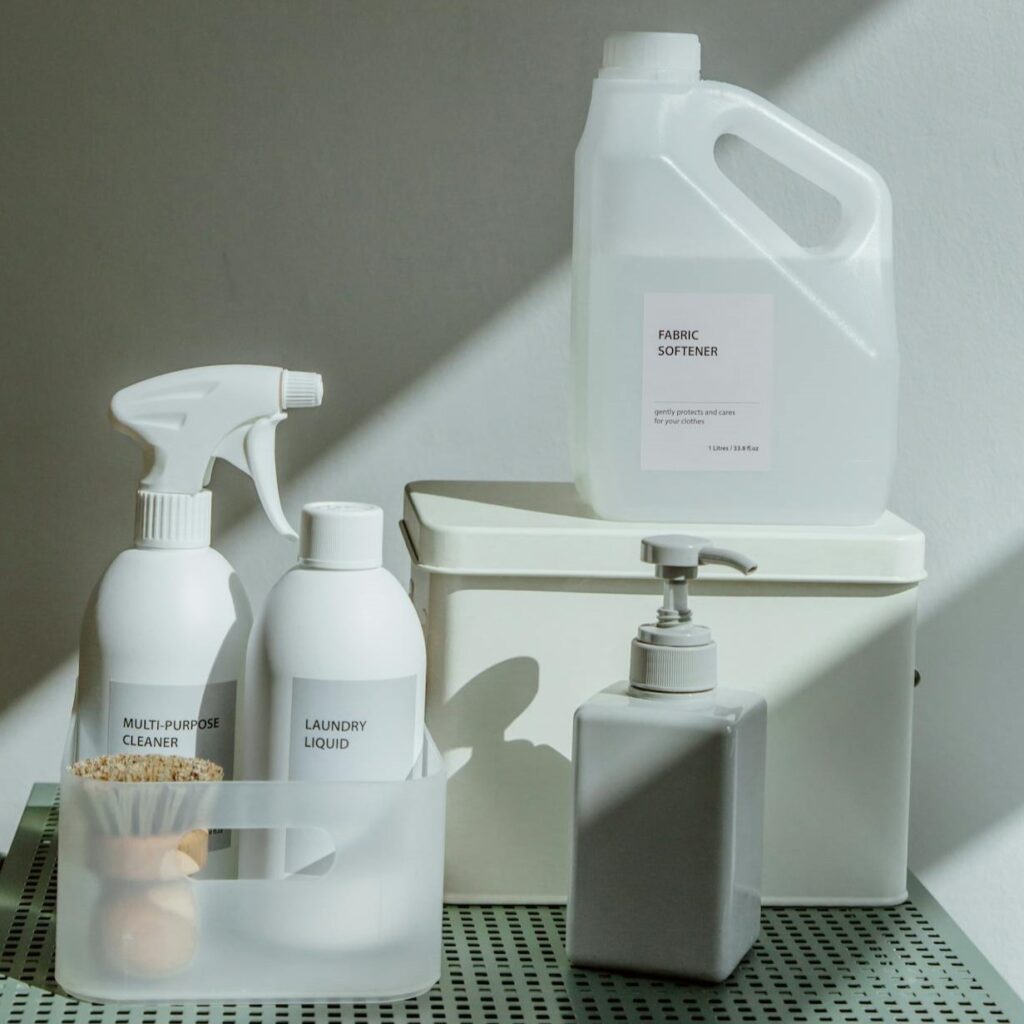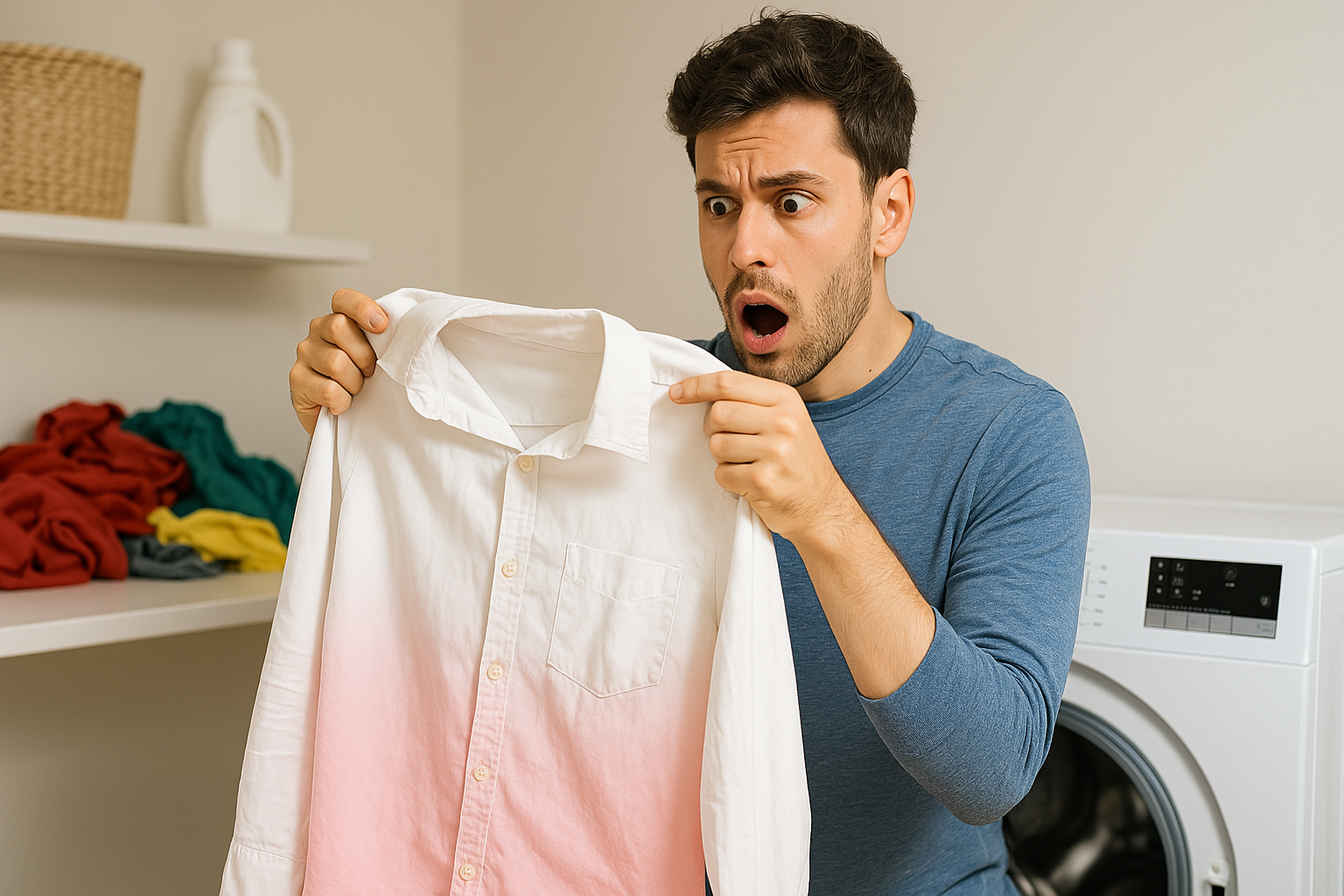
Red and orange clothes tend to bleed color more than any other garments. You might feel frustrated to find an unwanted pink splash on your white shirt, but stopping clothes from bleeding color is simpler than you’d expect.
Poor-quality dye or ineffective dyeing techniques usually cause color bleeding. These dyes can transfer to lighter-colored items during washing and leave unwanted stains. A simple way to protect your clothes is to sort your laundry into lights, whites, and darks. Quick action makes a difference; wet garments with dye transfers need immediate treatment.
The washing machine offers several ways to keep clothes from bleeding color. Cold water keeps the fabric’s fibers closed and traps the dye inside. Hot water tends to loosen the dye’s grip. Your kitchen supplies can help, too. White vinegar and table salt work well; add half a cup of vinegar to your wash to set dyes and minimize future bleeding.
This blog will guide you through everything from testing if colors will run to smart laundry habits that prevent bleeding. These practical tips will keep your wardrobe’s colors bright and stain-free, whether you have new clothes that might bleed or want to protect your favorite pieces long-term.
How Different Fabrics React to Washing
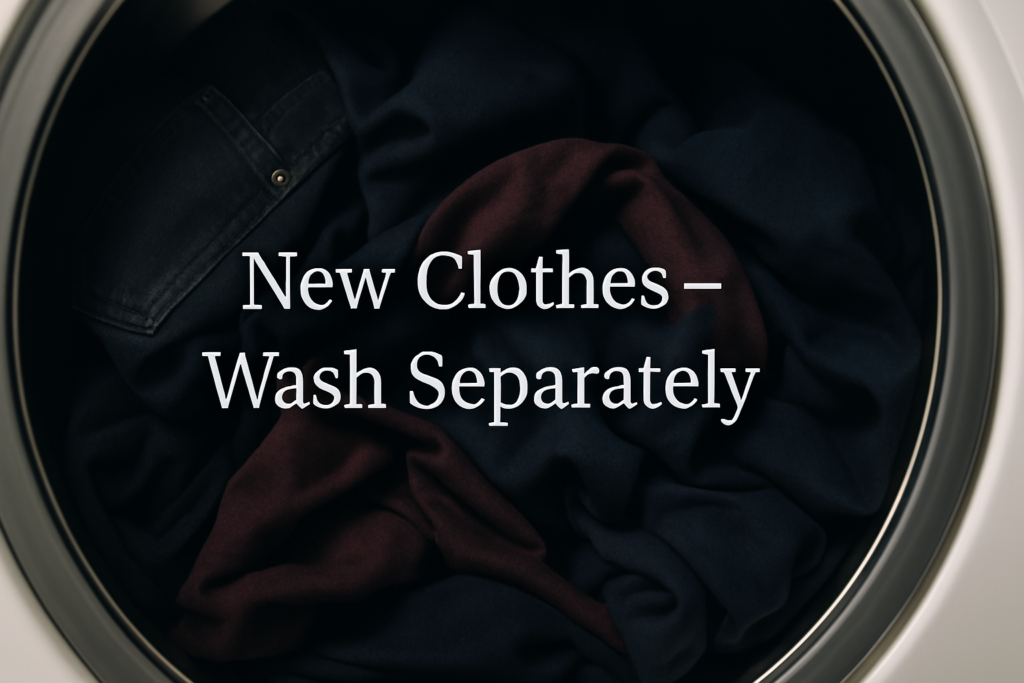
You need to know your fabric’s composition to stop color bleeding. Different materials react uniquely to wash cycles, detergents, and water temperatures. Let’s look at what you should know before you toss everything in the washer.
1. Cotton vs. polyester vs. wool
Natural fibers and synthetic materials behave differently in the wash. Cotton comes from plant fibers and soaks up dye easily, but lets it go just as fast. That’s why your cotton t-shirts fade quicker than expected. Wool’s unique scale-like fiber structure pulls dye deep inside each fiber. This makes it less likely to bleed than cotton, though not as stable as synthetics.
Polyester keeps its color better because it’s not dyed like other fabrics. It’s a petroleum-based product where color gets added during its chemical state before it becomes fiber. This makes polyester hold its bright colors much longer than cotton or wool.
Water temperature plays a significant role in how these fabrics act. Hot water makes natural fibers release more dye as their fibers expand and loosen. You should never wash synthetics above 60 degrees Celsius. A safer bet is 40 degrees to keep colors bright.
2. Why synthetic fabrics bleed less
The manufacturing process gives synthetic fabrics better colorfastness. Unlike natural fibers that need dye after they’re made, synthetic fibers get their color during creation. Makers mix color into the chemical mix before spinning the fiber. This creates more stable colors that last longer.
Synthetic fibers like polyester and nylon are three times thinner than silk but much tougher. Their plastic base breaks down more slowly than natural fibers, which helps them keep their color. High-quality synthetic dyes are also more stable and less likely to run in the wash.
Hard water can make colors bleed more. Research shows bleeding increases substantially at 300 ppm water hardness but stays minimal at 30 ppm. Living in a complex water area might cause color transfer, no matter what fabric you wash.
pH levels affect dye stability, too. Dark colors bleed most in alkaline environments (pH 9-11) but stay stable at near-neutral pH (6-8). That’s why color-safe detergents like Woolite Darks keep a neutral pH balance.
3. How blends behave in the wash
Blended fabrics mix different materials’ properties and create unique washing challenges. High-polyester blends act like pure polyester, with some differences based on the mix ratio. But even mostly synthetic blends can bleed if they use unstable dyes or weak fixing agents.
Blends react differently to temperature. Brown and violet blended fabrics start bleeding at 80°C, while other colors stay stable until 90-100°C. Damp storage is another risk; brown and violet blends keep bleeding when stored at 37°C for 18 hours before drying.
Watch out for nylon in blends. Textile experts call it a “dye scavenger” because it pulls in dye from other fabrics. Light-colored nylon blends will likely pick up color when washed with bleeding items.
You can protect against color bleeding with specific products. Color catcher sheets like Shout Color Catcher (~$5) work great for mixed loads. Woolite Darks Liquid Laundry Detergent (~$10-$12) helps keep dark clothes’ color across fabric types.
Don’t treat all your clothes the same way. Know these fabric differences to create washing strategies that stop color bleeding and make clothes last longer. Sort your laundry based on each fabric’s needs to keep them looking new.
How to Test Clothes for Colorfastness
A quick color test before washing your new bright clothes can save your favorite outfits from getting ruined. Some clothes might look colorfast but release dye when they touch water, detergent, or rub against other fabrics. Simple home tests will tell you if your clothes will bleed color.
1. The white cloth rub test
The rubbing test (the “crocking test”) helps you check if fabric dye transfers during regular wear or washing. This method checks color transfer in dry and damp conditions that match real-life situations like sweating or rain exposure.
To perform the dry rubbing test:
- Find a white cloth or paper towel
- Rub it firmly against the colored fabric for 10 cycles in a straight line
- Check the white cloth for any color transfer
- Grade the results: visible color transfer shows poor colorfastness
The wet rubbing test follows the same steps as a damp white cloth, but wet rubbing shows more color transfer than dry rubbing. Textile experts say clothes resist dry rubbing better than wet rubbing.
Labs use a “crockmeter” device to rate results on a 5-point scale. A score of 5 means no color transfer, while 1 shows severe bleeding. At home, look at how much dye gets on your white clothes. A noticeable color means you’ll need special care when washing.
2. Soak test for new garments.
The soak test gives you a complete picture, especially when you have new clothes. This test shows how colors behave in the wash.
Step-by-step soak test:
- Mix a teaspoon of laundry detergent with a cup of warm water (use your normal wash temperature)
- Submerge a small, hidden part of the garment (like a hem or inside seam) in the solution
- Let it soak for 30 minutes
- Remove the fabric without rinsing
- Press it against a white paper towel or cloth
- Check for color transfer on the white material
Your garment will likely bleed in the wash if the water changes color or dye gets on the white material. You should repeat this test several times to check if the fabric bleeds after multiple washes.
Clothing labels with warnings like “wash separately,” “wash in cold water,” or “turn inside out to launder” hint that the dyes might not be colorfast. Bright colors like red, blue, violet, and black bleed more than other shades.
Clothes that fail either test should be washed alone at first. Products like Shout Color Catcher sheets (~$5) can catch loose dyes during washing to protect other clothes.
Pre-washing new clothes with bright colors like red and purple helps remove extra dye. These items need separate washing for the first few cycles to confirm colorfastness and remove manufacturing residues. This step protects your other clothes from unexpected stains.
Testing colorfastness is a vital first step to learn how to stop clothes from bleeding color over time. Once you know which clothes might bleed, you can wash them properly to keep your wardrobe looking bright.
Smart Laundry Habits That Prevent Bleeding
Your laundry routine matters as much as the products you use to prevent color bleeding. Simple changes in washing clothes can protect them from dye damage and make them last longer.
1. Read and follow care labels.
Care labels guide you through proper garment care. These small fabric tags tell you exactly how to wash each piece of clothing. Check for warnings like “wash before wearing,” “do not use detergent,” “wash with like colors,” or “use cold water”; these show that the dyes might bleed during washing.
Each care label has specific symbols that tell you the washing requirements. A washtub with one dot means cold water washing, while a crossed-out washtub tells you not to wash the item. These aren’t just suggestions; they’re exact guidelines from manufacturers who know their product’s dye stability.
“If the label doesn’t mention these warnings, your clothing is likely colorfast, meaning the dyes are more resistant to bleeding and fading,” notes Speed Queen, a leading laundry equipment manufacturer. However, clothes without clear warnings might need careful washing, especially in their first few cycles.
2. Don’t overload the washer.
Colors often bleed because people stuff too many clothes into their washing machines. Clothes need space to move during the wash cycle. This reduces friction that can cause dyes to transfer. “Overfilling the washer won’t allow clothes to tumble or clean properly,” explains Whirlpool, a major appliance manufacturer.
Place items loosely around the central column in top-loading machines with agitators. Front-loading washers need clothes spread evenly around the drum for balance. You should fit your hand into the top of a full load; if you can’t, there are too many clothes inside.
Overloading creates several problems that lead to color bleeding:
- More friction between clothes loosens dye particles
- Less water circulation keeps dyes concentrated
- Poor rinsing leaves extra dye on fabrics
These problems create perfect conditions for color transfer. “Don’t overfill your washer or pack clothes into the washer,” advises Speed Queen. “Not only will they come out cleaner, but clothing also will be exposed to less friction.”
3. Use cold water and short cycles.
Cold water works best to stop colors from bleeding. It keeps fabric fibers closed and traps dye molecules inside. Hot or warm water opens these fibers and lets dye escape more easily, which makes colors bleed.
“Cold water washing proves highly effective in preventing color bleeding,” confirms FC Dry Cleaners. “This method keeps fabric fibers closed, trapping dye molecules inside.” Today’s detergents, from budget-friendly Shout Color Catcher Sheets (~$5) to premium Seventh Generation Concentrated Detergent (~$20-$25), work well even in cold water.
Cycle length and intensity affect how well colors stay put. Gentle or delicate cycles use less agitation and less friction to shake loose dye particles. “Wash clothes using the permanent press or gentle setting, which are easier on your laundry than regular cycles,” recommends Speed Queen.
Bright items like dark jeans or red clothes might need the quick wash setting. “The quick wash setting washes clothes quickly, though it’s not quite as thorough. This is a good option for smaller loads of laundry that are only lightly soiled,” notes The Spruce. Quick wash uses less agitation but more spin time, reducing dye transfer while cleaning clothes well.
These three habits, reading care labels, loading your washer right, and using cold water with gentle cycles, protect your whole wardrobe from color bleeding.
How to Stop Clothes from Bleeding Color in the Washing Machine
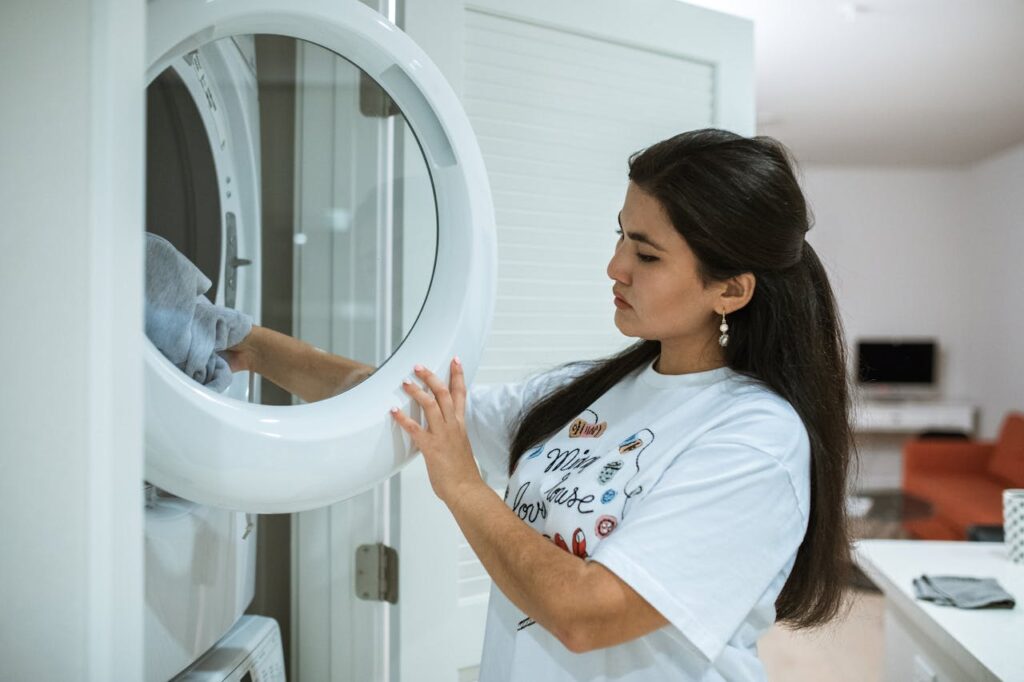
Some clothes stubbornly bleed color even when you follow best practices. The good news? Specific laundry additives and products can protect against dye transfer. These solutions are a great way to get your clothes to stop bleeding color in the washing machine.
1. Use color-safe detergents
Color-safe detergents pack special ingredients that lock dyes inside fabric fibers and stop them from leaking during wash cycles. Research shows these formulations maintain a neutral to slightly alkaline pH range (6-8), considerably reducing color bleeding compared to more alkaline environments.
These detergents stand out because they include:
- Enzymes and cleaning agents that tackle stains without hurting color integrity
- Conditioners that shield fabric fibers from wear that causes fading
- Special formulas that work well in cold water
You’ll find options at all price points to protect vibrant colors. Tide Plus ColorGuard (~$10-$12) targets color protection while fighting stains. Woolite Darks Liquid Laundry Detergent (~$10-$12) keeps dark-colored garments vibrant. Looking for an eco-friendly choice? Seventh Generation Concentrated Detergent (~$20-$25) provides plant-based color protection without dyes or fragrances.
Avoid detergents with chlorine bleach; they speed up color fading and bleeding. Your best results come from following the manufacturer’s dosage instructions. Too much detergent can leave a residue that makes colors transfer more.
2. Add vinegar or salt to new clothes.
Distilled white vinegar works wonders against color bleeding. Its acidic properties seal dyes inside fabric fibers and soften clothes naturally. Here’s what works best:
- Pour half a cup of white vinegar into your rinse cycle
- New garments with lots of pigment need one full cup
- Cold water helps minimize dye release further
Table salt helps colors stay put in fabrics, too. Just add one tablespoon straight to your wash load for better dye retention. Cotton fabrics respond exceptionally well to this method.
These popular tricks have their limits, though. The Spruce points out, “neither method will work reliably to prevent dye bleeding from clothes or fabrics that have already been commercially dyed.” Vinegar and salt help most during cotton yarn manufacturing or fabric treatment. Commercial dye fixatives work better for store-bought clothes that keep bleeding.
3. Try color catcher sheets for mixed loads.
Color catcher sheets might be the most scientifically proven way to prevent dye transfer. These special laundry sheets work like magnets that grab loose dyes from wash water before they can stick to other clothes.
Lab tests show color catchers successfully absorbed dye from purple solutions and kept white fabrics clean. The test sheets got 41% darker, while white test garments stayed unchanged. This makes them perfect for loads with both dark and light items.
Here’s how to use color catcher sheets:
- Drop one sheet in the washing machine drum first
- Add your usual detergent
- Use two sheets for bigger loads or ones with new/bright items
- Front-loading machine users should put the sheet in a mesh bag at the back of the drum
Shout Color Catcher Sheets (~$5) lead the market as the most well-known brand. They work safely on all colorfast washables at any water temperature. The sheets cost more than sorting clothes by color, but many people find the time saved makes up for it.
These methods cut down the risk of color bleeding quite a bit. They work even better with good laundry habits, reading care labels, not overloading machines, and using cold water cycles.
How to Set Color in Fabric with Vinegar and Salt
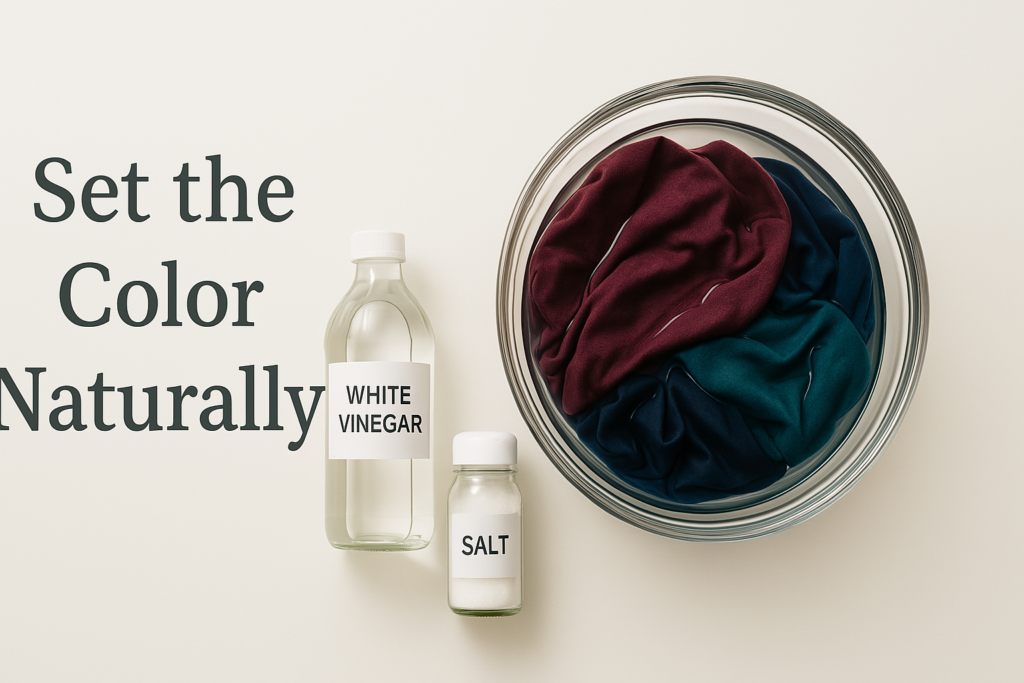
The vinegar and salt method ranks among the most popular home remedies ever used for setting colors in the fabric. You’ll find it in countless online guides and family traditions. The real question is whether this approach works or is another old wives’ tale.
1. What this method can do
Research from the University of Nebraska-Lincoln revealed some disappointing news: vinegar and salt treatments don’t help prevent color loss in commercially dyed fabrics. On top of that, some treatments made the color bleeding worse after washing.
These methods still play specific roles in the dyeing process. When manufacturers dye cotton yarn fibers, salt acts as a mordant (a chemical that fixes dye). Vinegar’s acidity helps wool or nylon take on color during the original dyeing phase. Natural dyes respond differently; vinegar is a mordant for vegetable-based dyes, while salt works better with fruit-based dyes.
2. Step-by-step soaking process
Here’s what to do with newly dyed fabric, or if you want to try this method anyway:
- Fill a large, clean container with one gallon of fresh water
- Add one-fourth cup of table salt and one cup of white vinegar
- Stir well to dissolve salt completely
- Submerge the garment until it is fully saturated
- Let it soak for 24 hours
- Rinse in fresh water afterward
- Repeat if the color keeps coming out
Natural dyes need a different approach. Pre-soak natural fabrics in either 1 cup vinegar + 4 cups water (vegetable-based dyes) or 1/4 cup salt + 4 cups water (fruit-based dyes).
3. Warnings and limitations
Your washing machine won’t thank you for adding vinegar directly. The acid can damage rubber parts and hoses over time. The vinegar might also stop your detergent from working properly.
Commercial products work better for preventing color bleeding in store-bought clothes. Color catcher sheets like Shout Color Catcher (~$5) or specialty detergents like Woolite Darks (~$10-$12) are a great way to get protection against dye transfer.
Note that vinegar might bleach some fabrics and harm elastic components. If your clothes keep bleeding after several vinegar/salt treatments, they probably have excess dye that will fade with multiple separate washes.
Best Tools and Products for Color Protection
Your wardrobe needs specialized products to lock in color and prevent bleeding. Standard washing techniques might not give enough protection, but targeted solutions can defend your clothes against fading and color transfer.
1. Top 3 detergents for color care
Color-safe detergents help preserve fabric colors through multiple washes with their specialized formulations. Look for detergents labeled “color-safe”; they use milder cleaning agents that remove dirt without stripping away dye molecules.
Here are your best options to protect colors:
(i) Budget Pick: Shout Color Catcher Sheets, ~$5
- Shout Color Catchers lock in dyes during the wash, preventing bleeding and keeping your clothes vibrant, even when mixing whites and colors in one load.
- These sheets save time by eliminating the need to sort laundry, so you can wash mixed colors without worrying about color transfer or fading.
- Safe for all machines and temperatures, they make laundry hassle-free while protecting every fabric’s original hue from bleeding or dulling after each wash.
(ii) Normal Pick: Woolite Darks Liquid Laundry Detergent, ~$10–$12
- This detergent protects dark clothes from fading, helping them stay vibrant, perfect for keeping black jeans or navy tops looking new.
- It is designed to prevent fading, fuzz, pilling, and stretching, so it keeps your favorite outfits in top shape, even after multiple washes.
- Works in cold water and all machine types, gently cleaning while adding a light fresh scent, without harsh ingredients like bleach or phosphates.
(iii) Premium Pick: Seventh Generation Concentrated Detergent (bulk pack), ~$20–$25
- Ultra-concentrated formula delivers 66 powerful washes in a compact 23 oz bottle, saving space while staying eco-friendly with less waste and smarter storage.
- One firm squeeze is all you need. Thanks to Easy Dose technology, you’ll never use too much or too little detergent again.
- With no dyes or fragrances, it’s tough on stains and gentle on clothes, using 60% less plastic and 75% less weight than traditional bottles.
Add detergent to the drum before you put in clothes or use the dispenser. Pouring detergent directly on clothes can leave spots or stains.
2. When to use commercial dye fixatives
Commercial dye fixatives are your last defense against stubborn bleeding. These products make dye molecules swell in the fabric so they stick better.
Dye fixatives work best for:
- Quilting project fabrics
- New store-bought clothes that need extra color protection
- Cotton and cellulose fibers with direct or all-purpose dyes
Retayne, Raycafix, and Rit ColorStay Dye Fixative are great options that reduce bleeding and fading while making colors pop. You’ll get the best results using the stovetop method or washing machine; follow the package instructions.
These products work best right after dyeing or before the first wash. They might not help much with previously washed items.
3. How to store clothes to prevent fading
Storage plays a vital role in keeping colors fresh. Light exposure can fade most dyes, and silk is extra sensitive.
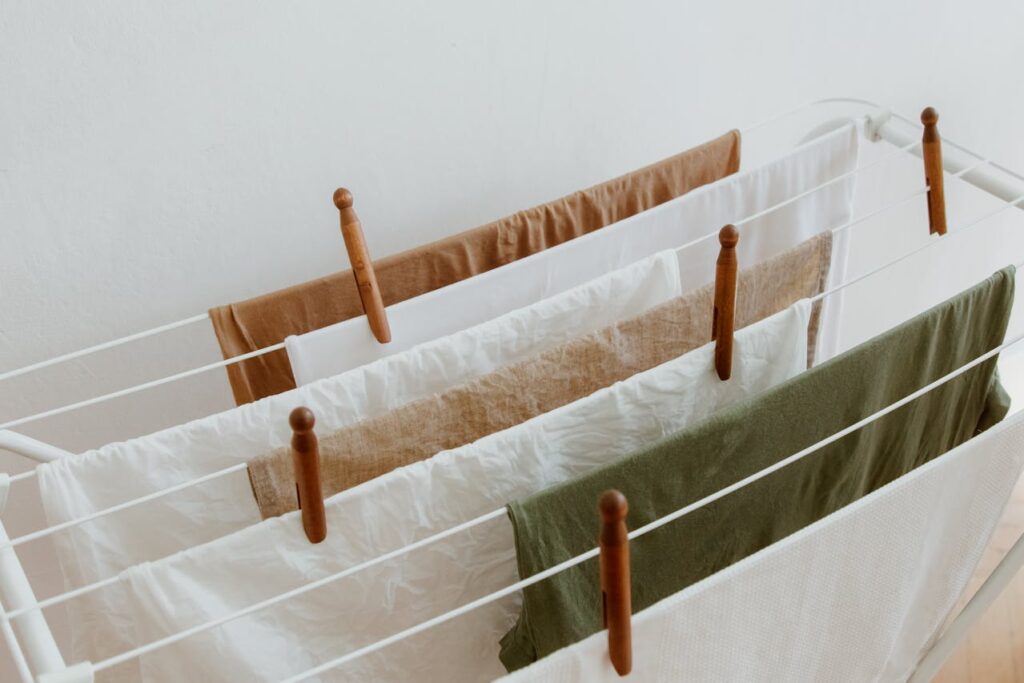
Here’s how to keep colors bright:
- Pick cool, dry spots away from light; even closet lights can cause fading
- Use canvas or cotton garment bags that let air flow while keeping dust away
- Put delicate items in acid-free tissue paper to stop color transfer and wrinkles
- Skip plastic covers; they trap moisture and lead to mildew
- Clean and dry clothes thoroughly before storage to avoid insect damage
Cedar chests with mothballs work well for seasonal storage, but you must air out clothes to remove the smell. Quality detergents, the right fixatives, and smart storage will help your favorite colored clothes stay vibrant much longer.
Conclusion
Preventing color bleeding starts with understanding how fabrics react in the wash. Synthetics like polyester hold dye better than natural fibers like cotton and wool. A quick colorfast test on new clothes can save your laundry from unwanted dye transfers.
Smart laundry habits make all the difference. Always check care labels, wash in cold water, and avoid overloading the machine. For extra protection, budget-friendly products like Shout Color Catcher Sheets and Woolite Darks help lock in colors and prevent fading, especially during those first few washes.
Lastly, storing clothes properly helps preserve their brightness. Keep them out of direct sunlight, store them in breathable bags, and make sure garments are clean before putting them away. These simple steps go a long way in keeping your favorite outfits looking fresh and vibrant.
